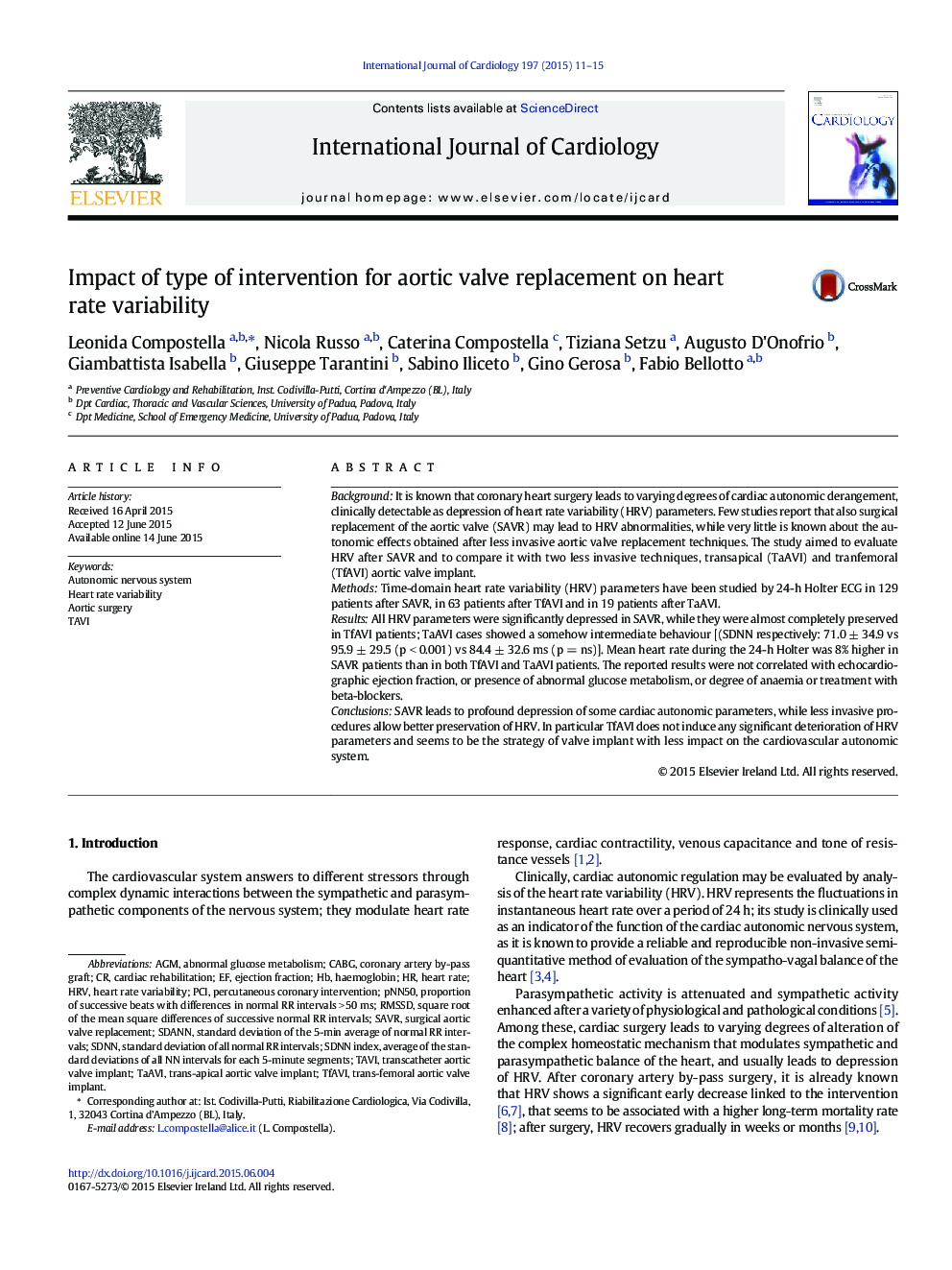| Article ID | Journal | Published Year | Pages | File Type |
|---|---|---|---|---|
| 2928902 | International Journal of Cardiology | 2015 | 5 Pages |
•HRV is markedly depressed in the first few weeks after SAVR.•TAVI techniques produce lower level of HRV derangement.•TfAVI allows maintenance of HRV parameters in the range of normality.•In patients with cardiac dysautonomia, TfAVI approach should be considered.
BackgroundIt is known that coronary heart surgery leads to varying degrees of cardiac autonomic derangement, clinically detectable as depression of heart rate variability (HRV) parameters. Few studies report that also surgical replacement of the aortic valve (SAVR) may lead to HRV abnormalities, while very little is known about the autonomic effects obtained after less invasive aortic valve replacement techniques. The study aimed to evaluate HRV after SAVR and to compare it with two less invasive techniques, transapical (TaAVI) and tranfemoral (TfAVI) aortic valve implant.MethodsTime-domain heart rate variability (HRV) parameters have been studied by 24-h Holter ECG in 129 patients after SAVR, in 63 patients after TfAVI and in 19 patients after TaAVI.ResultsAll HRV parameters were significantly depressed in SAVR, while they were almost completely preserved in TfAVI patients; TaAVI cases showed a somehow intermediate behaviour [(SDNN respectively: 71.0 ± 34.9 vs 95.9 ± 29.5 (p < 0.001) vs 84.4 ± 32.6 ms (p = ns)]. Mean heart rate during the 24-h Holter was 8% higher in SAVR patients than in both TfAVI and TaAVI patients. The reported results were not correlated with echocardiographic ejection fraction, or presence of abnormal glucose metabolism, or degree of anaemia or treatment with beta-blockers.ConclusionsSAVR leads to profound depression of some cardiac autonomic parameters, while less invasive procedures allow better preservation of HRV. In particular TfAVI does not induce any significant deterioration of HRV parameters and seems to be the strategy of valve implant with less impact on the cardiovascular autonomic system.
Graphical abstractFigure optionsDownload full-size imageDownload high-quality image (100 K)Download as PowerPoint slide
